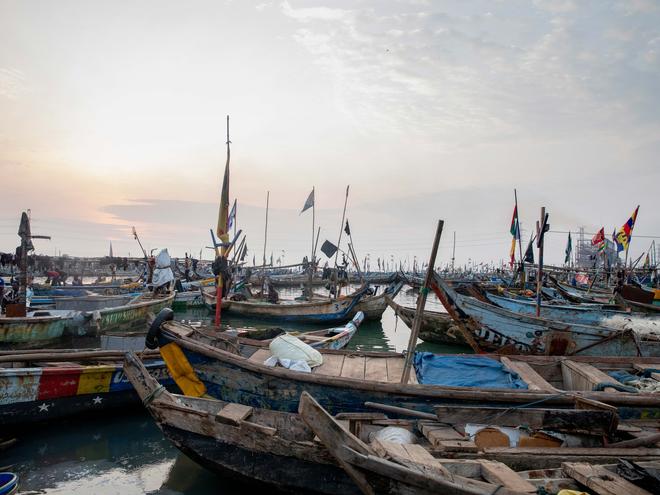
Ocean conservation requires a solid understanding of what we’re taking out of our seas. How much fish do fishers catch? Where do they catch them? And what else are they catching along with the fish?
In Ghana, the government is seeking to answer those questions by collecting information digitally on tuna boats through a network of cameras, monitors, and sensors. That data provides guidance on how we can better care for our natural resources and reassures buyers that they’re getting a good catch. But that information is only useful if it’s analyzed. That’s where a few trailblazing women come in.
WWF’s Lauren Spurrier advocated for women to have access to jobs reviewing and organizing the information collected on boats—and she succeeded. Today, four of the 10 people tasked monitoring fishing in Ghana are women and this assignment provided the opportunity for them to pursue a professional future in a country with limited career opportunities. Ultimately, two of the women dedicated to the analysis work full-time accomplished 75% of the analysis.
“As a woman, this project is an eye-opener for me,” said Agyeman Narkie Akua, an observer. “It boosts my strength because this is new, and I get to be a part of it. And in the future, I stand at a place where I can also educate other women if they have the desire to be part of something like this. We show them, ‘Hey, it’s possible.’”
WWF is working with the United Nations Food and Agriculture Organization and the Ministry of Fisheries and Aquaculture Development of Ghana to equip the purse seine tuna fleet—a collection of vessels that use lengthy nets to encircle large schools of fish—with electronic monitoring systems. Now observers like Akua can see exactly what is being taken out of the water, who is taking it, and where and when it’s happening. And it’s a safety net for vessel owners who can guarantee the market that their crews follow the rules.
Published May 02, 2019 at 05:00AM
No comments:
Post a Comment